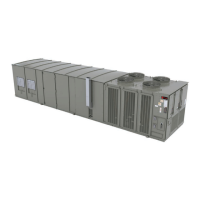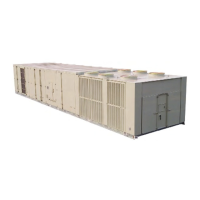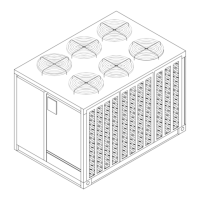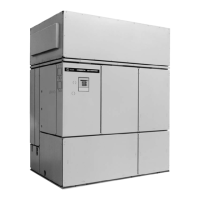112
RT-SVX063E-EN
Refrigerant Evacuation and Charging
NNOOTTIICCEE
CCoommpprreessssoorr DDaammaaggee!!
FFaaiilluurree ttoo ffoollllooww iinnssttrruuccttiioonnss bbeellooww rreessuulltt iinn
ppeerrmmaanneenntt ddaammaaggee ttoo tthhee ccoommpprreessssoorr..
TThhee uunniitt iiss ffuullllyy cchhaarrggeedd wwiitthh RR--441100AA rreeffrriiggeerraanntt
ffrroomm tthhee ffaaccttoorryy.. HHoowweevveerr,, iiff iitt bbeeccoommeess nneecceessssaarryy
ttoo rreemmoovvee oorr rreecchhaarrggee tthhee ssyysstteemm wwiitthh rreeffrriiggeerraanntt,,
iitt iiss iimmppoorrttaanntt tthhaatt tthhee ffoolllloowwiinngg aaccttiioonnss aarree ttaakkeenn..
IImmppoorrttaanntt:: Do Not release refrigerant to the
atmosphere! If adding or removing
refrigerant is required, the service
technician must comply with all federal,
state, and local laws.
• To prevent cross contamination of
refrigerants and oils, use only dedicated
R-410A service equipment.
• Disconnect unit power before
evacuation and do not apply voltage to
compressor while under vacuum.
Failure to follow these instructions will
result in compressor failure.
• Due to the presence of POE oil,
minimize system open time. Do not
exceed 1 hour.
• When recharging R-410A refrigerant, it
should be charged in the liquid state.
• The compressor should be off when the
initial refrigerant recharge is performed.
• Charging to the liquid line is required
prior to starting the compressor to
minimize the potential damage to the
compressor due to refrigerant in the
compressor oil sump at startup.
• If suction line charging is needed to
complete the charging process, only do
so with the compressor operating. Do
not charge liquid refrigerant into the
suction line with the compressor off!
This increases both the probability that
the compressor will start with
refrigerant in the compressor oil sump
and the potential for compressor
damage.
• Allow the crankcase heater to operate a
minimum of 8 hours before starting the
unit.
Charge Storage
Due to the reduced capacity of the microchannel
condenser coil compared to the round tube plate fin
evaporator coil, pumping refrigerant into the
condenser coil to service the refrigerant system is no
longer an option.
Refrigeration Pressure Curves
Please refer to “Pressure Curves,” p. 113 to locate the
curve that corresponds to the unit’s refrigeration
system. This plot will indicate the approximate
discharge line pressure which should be observed at a
given outdoor ambient dry bulb temperature and
suction pressure when the unit has the correct amount
of subcooling (indicating that it is properly charged.)
For meaningful use of the Pressure Curve charts,
please refer to the following:
• Ensure outdoor ambient temperature is between
65°F and 105°F, and that the air entering the
evaporator is at least 40% Relative Humidity.
• Ensure all condenser fans are running at full speed
for the circuit you are testing, and that the Hot Gas
Bypass Valve is fully closed (if applicable to your
system.)
• Verify that the Hot Gas Reheat Valve (if applicable)
is set to 0% reheat.
• Pressures curves represent 100% compressor
capacity as displayed at unit touch pad. All
compressors must be running and variable speed
compressors must not be speed limited due to
discharge pressure or current. Note that depending
on unit size, variable speed compressor RPM
typically is less than 6000 RPM at 100% unit
compressor capacity.
Measuring Subcooling
1. At the liquid line service port, measure the liquid
line pressure. Using an R-410A pressure/
temperature chart, convert the pressure reading
into the corresponding saturated temperature.
2. Measure the actual liquid line temperature as close
to the liquid line service port as possible. To ensure
an accurate reading, clean the line thoroughly
where the temperature sensor will be attached.
After securing the sensor to the line, insulate the
sensor and line to isolate it from the ambient air.
Use a thermocouple type probe for an accurate
reading.
3. Determine the system subcooling by subtracting
the actual liquid line temperature (measured in step
2) from the saturated liquid temperature (converted
in step 1.)
SSeerrvviiccee aanndd MMaaiinntteennaannccee
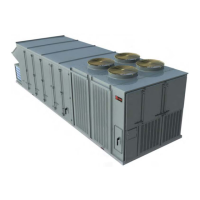
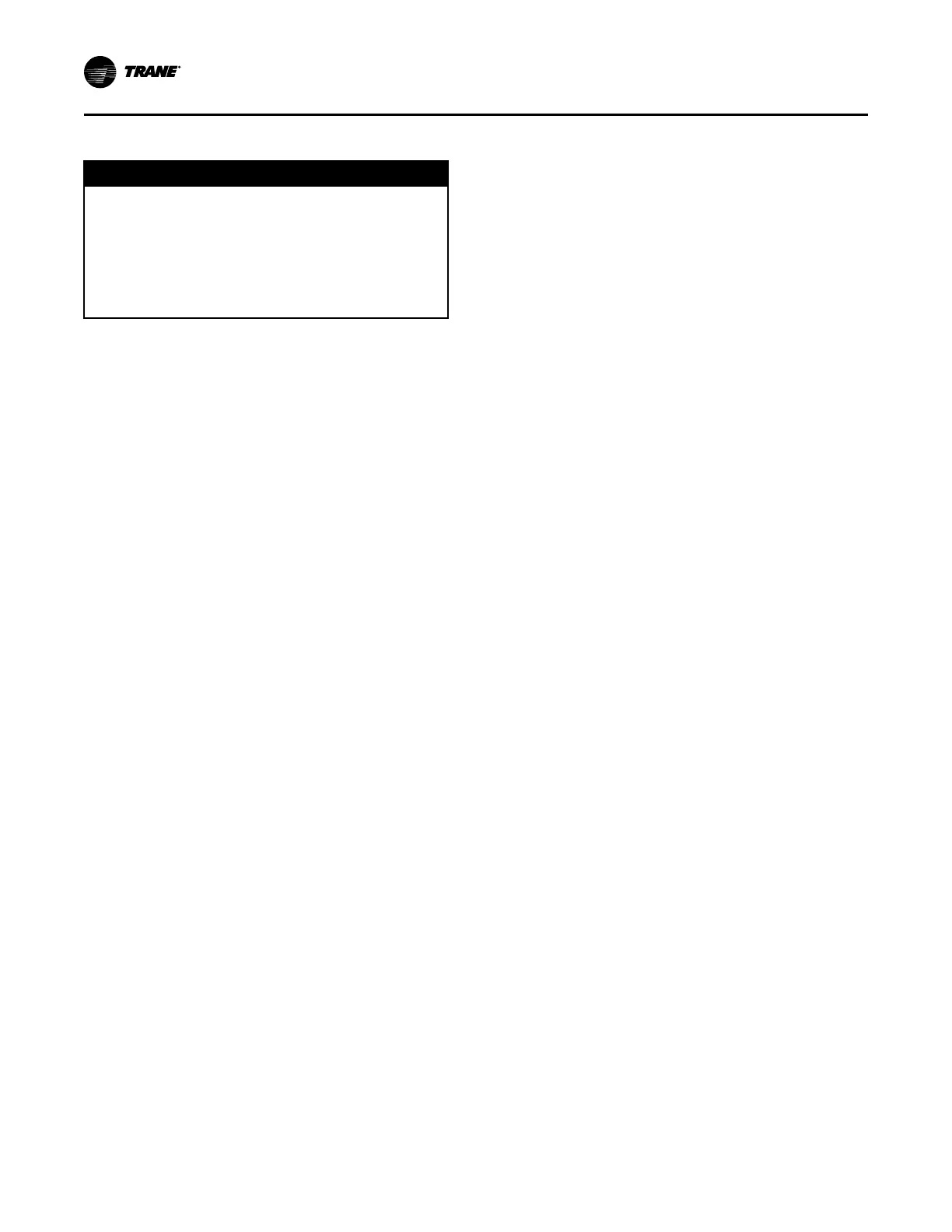